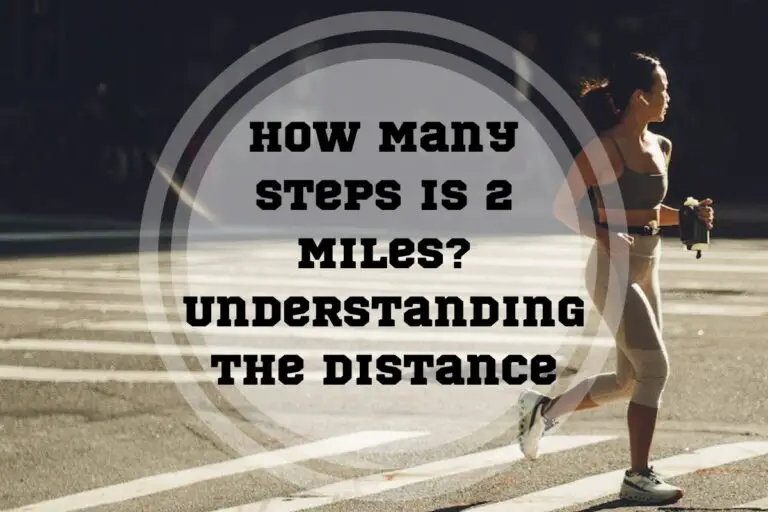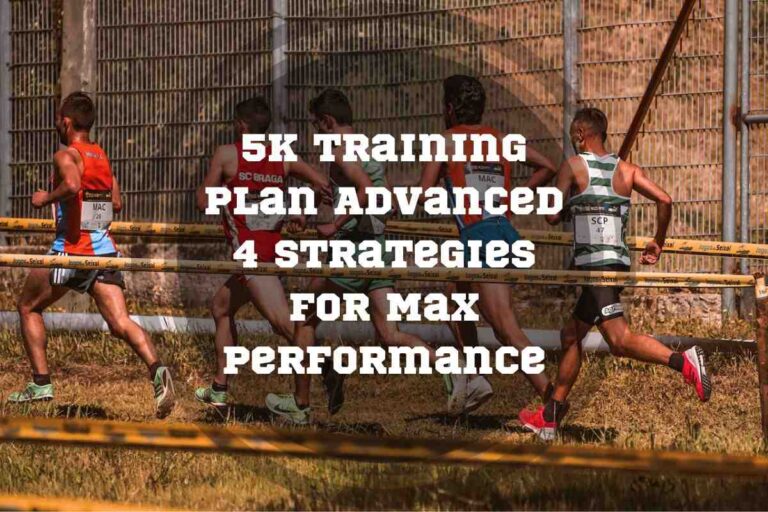Choosing Between Tough Mudder Vs. Spartan Race
In the early 2000s, the Japanese TV show Sasuke, known internationally as Ninja Warrior, sparked the global craze for outdoor obstacle courses. Nowadays, events like Spartan Race or Tough Mudder are popular worldwide.
This guide will give you a basic overview of Tough Mudder vs. Spartan Race events to help you decide which to try. We’ll explore the details of each race, including what’s involved, expectations, differences, similarities, notable obstacles, and effective approaches, all before you tackle their renowned mud pits.
Choosing between Tough Mudder vs. Spartan Race will mostly come down to expectations. Spartan Race is a highly competitive, physically challenging global circuit. Meanwhile, obstacle races like Tough Mudder are challenging but more relaxed, focused on teamwork and socializing rather than competing.
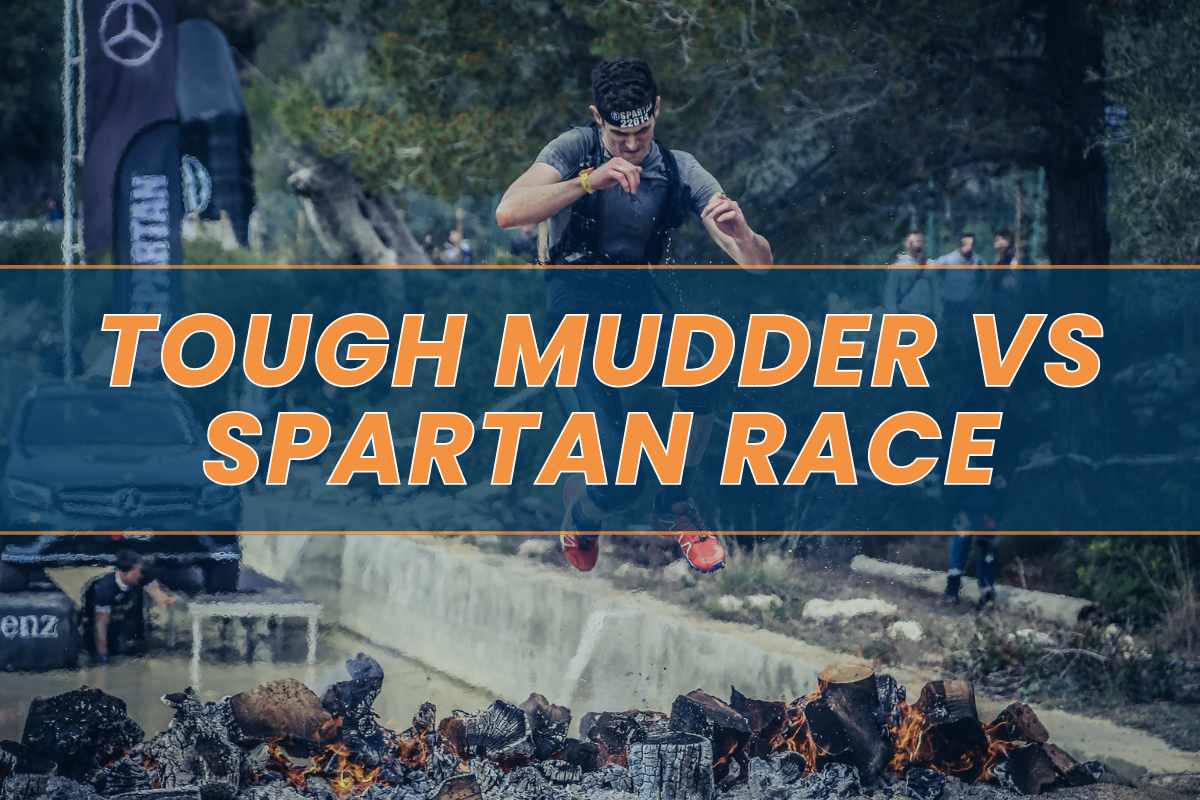
What Is The Spartan Race?
The Spartan Race is an obstacle course designed to provide a highly challenging experience. The first spartan race was held in 2010 in Vermont, U.S.A., and had 500 participants. It quickly spread across North America, Europe, and Asia. Nowadays, competitions are held globally, with millions of people entering.
Racers compete individually, intending to complete the course in the shortest time possible. Each challenger that completes the race gets a medal, with top scorers receiving various prizes as well. Many people love it because it’s the closest thing to a military-style obstacle course available to the general public.
The main types of Spartan Race courses include:
- City – 3-5 kilometers (roughly 1.8 to 3 miles), 20 obstacles, urban city setting, emphasis on speed
- Stadion – 5 kilometers, 20 obstacles, iconic stadiums, emphasis on speed and strength
- Sprint – 5 kilometers, 20 obstacles, outdoor setting, emphasis on speed and strength
- Super – 10 kilometers (roughly 6 miles), 25 obstacles, outdoor setting, all-around focus on strength, speed, endurance, etc.
- Beast – 21 kilometers (roughly 13 miles), 30 obstacles, outdoor setting, all-around focus with high emphasis on raw strength and endurance
- Ultra – 50 kilometers (roughly 30 miles), 60 obstacles, outdoor setting, ultimate physical and mental challenge but less focused on speed
Races take place throughout the whole calendar year. There’s a huge competitive aspect to them, with regional and global leaderboards and an annual World Championship event. The main achievement of the race circuit is the Spartan Trifecta – which involves completing at least one Sprint, Super, and Beast race in a calendar year.
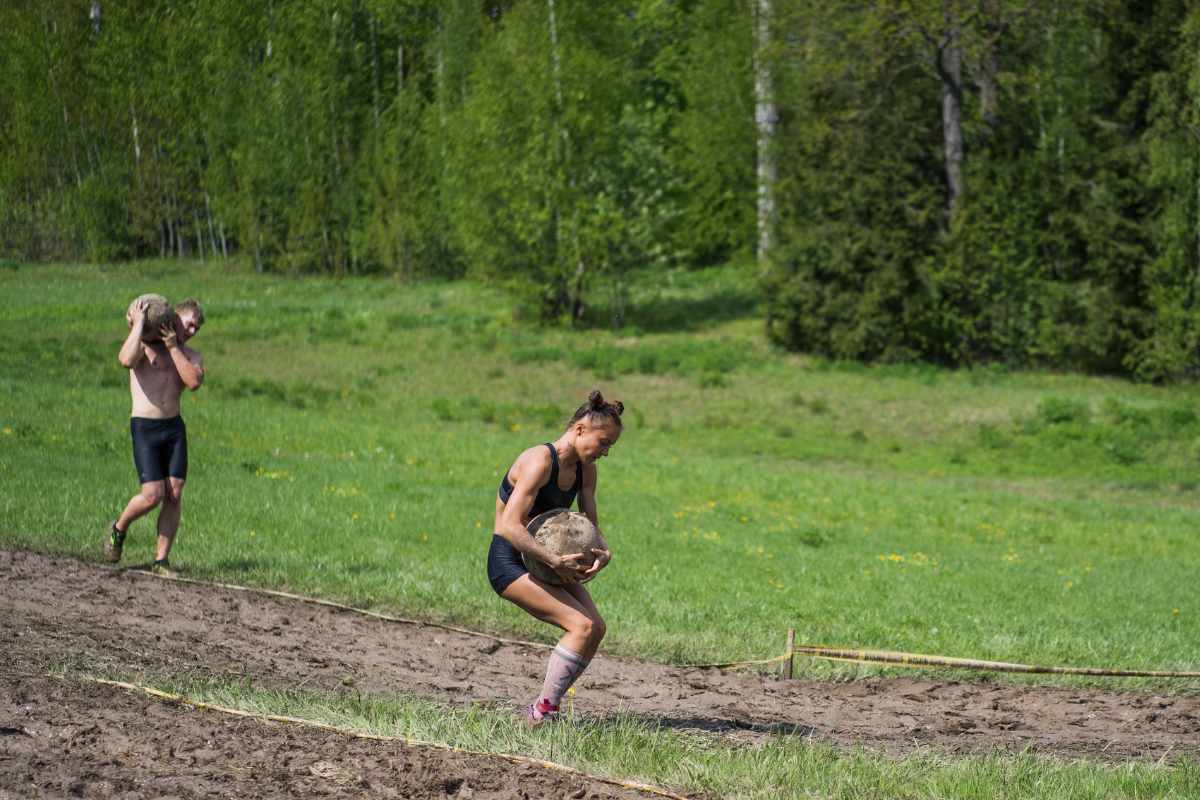
Popular Obstacles In Spartan Races
Spartan Race obstacles include a mix of strength, speed, agility, reflexes, and other athletic abilities. Popular obstacles include carrying heavy objects, climbing, and traversing terrain. Here are some examples:
- Atlas Carry – lift a 100 or 75 lbs (for male vs. female competitors) boulder and carry it to the finish line. Along the way, there could be additional challenges, such as mandatory stops, to make it more difficult and dynamic.
- Barbed Wire Crawl – just like the well-known military drill. Crawl a certain distance underneath sets of barbed wires without getting up.
- Rope and wall climbing – the well-known military, calisthenics, and cross-training drill, with unique twists such as rope length, wall angle, etc. depending on the race.
- Spear Throw – a staple of the race and directly inspired by Spartan Warriors. As the name suggests, you have to throw a spear at the target.
What Is a Tough Mudder?
Similar to Spartan Races, Tough Mudder is an obstacle course race. It’s owned by the same brand, so there are many similarities. Unlike traditional obstacle courses meant for single-person traversal, Tough Mudder emphasizes teamwork and camaraderie to beat the course. On average, it’s less physically intensive than a Spartan Race. That said, it’s not all fun and games either, with many of their popular obstacles, which we’ll talk about in a second, providing unique challenges that require both physical and mental toughness to overcome.
Tough Mudder race types include:
- Tough Mudder Classic – 8-10 miles, 25 obstacles, outdoor setting, most popular event
- Tough Mudder 5k AKA Half Mudder – 5 kilometers (roughly 3 miles), around 13 obstacles, outdoor setting, beginner-friendly
- Tough Mudder Infinity – 5 kilometers and 15 kilometers (roughly 9.4 miles), around 13 obstacles, emphasis on completing distance laps within 8 hours (with rest time allowed)
- Toughest Mudder – emphasis on completing laps within 12 hours (with rest time allowed)
- World’s Toughest Mudder – 5 miles, around 20 obstacles, emphasis on completing laps within 24 hours (with rest time allowed), minimum two laps to complete the challenge
Participants who complete Tough Mudder Infinity, Toughest Mudder, and World’s Toughest Mudder within a calendar year earn the Holy Grail trophy.
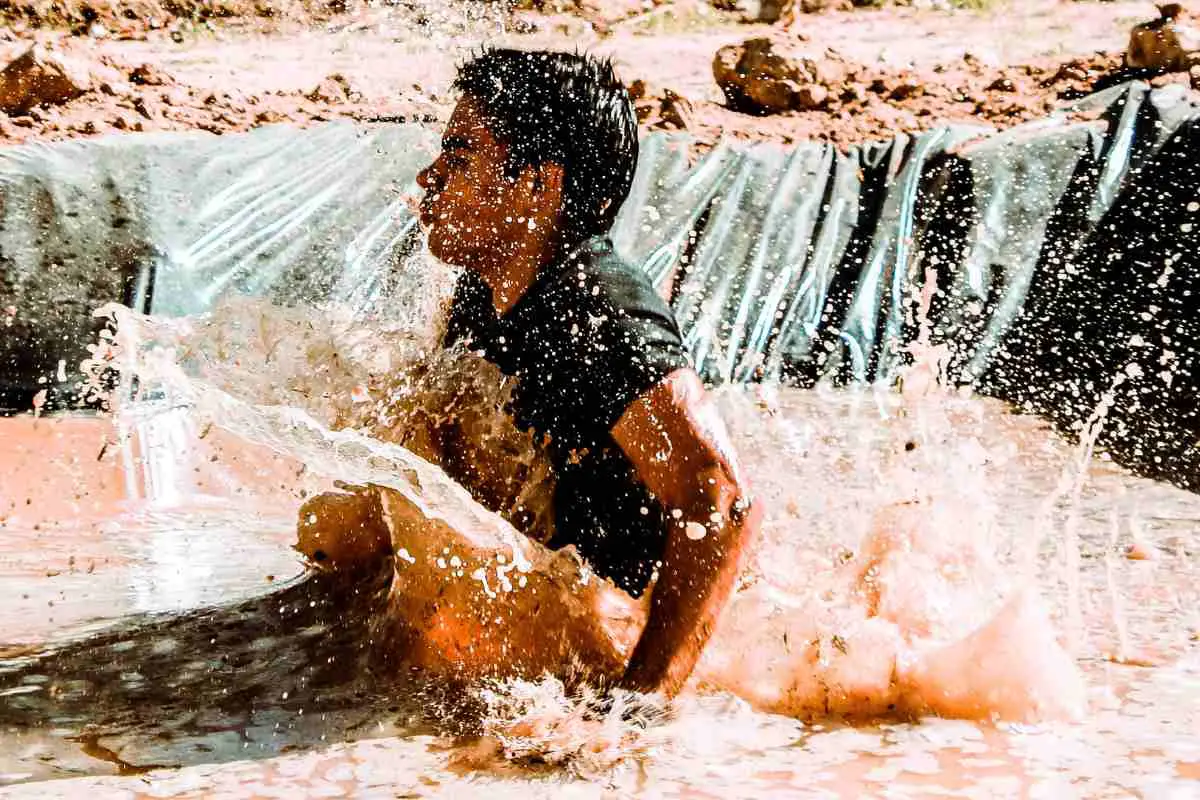
Popular Obstacles In Tough Mudder Races
Tough Mudder obstacles are more oriented towards problem-solving and mental capacity than raw physical ability, here are some popular ones:
- Arctic Enema – walking through muddy water, usually a pool or a river. No matter how tall you are, throughout the segment, there will be barricades forcing you to duck underneath, thus submerging yourself.
- Electroshock Therapy – participants walk through hanging live electric wires. The wires are tightly grouped so that you can’t avoid getting shocked no matter how careful you are. Obviously, the voltage is not deadly, but the obstacle tests your mental resilience.
- Funky Monkey – essentially a set of monkey bars with a twist, such as included and declined segments. The bars are also intentionally lubricated and muddy to be slippery, and they only get greasier the more people pass.
- Everest – participants must reach the top of a slippery quarter pipe. Requires excellent speed, agility, and timing. Most people complete it in pairs by boosting one person. Once they’re up, they reach down to catch the other person as they run up the pipe to pull them up.
5 Differences of Tough Mudder and Spartan Race
At first glance, both races appear quite similar. However, there are some important differences between Tough Mudder vs. Spartan Race. Here are the ones you must know:
1. Readiness
Spartan Races require a higher degree of individual physical readiness. They’re geared towards people who are already highly physically active and want to put their bodies to the test. You do not necessarily have to be Superman to complete them, but the main circuits are not beginner-friendly. In contrast, Tough Mudder is more inclusive. While general good physical health is expected, most obstacles don’t rely on raw strength and physical prowess, making the race accessible to varying fitness levels.
2. Atmosphere
Spartan Race events are designed as competitive. In the Elite and Competitive race categories, people will be there to chase results. That means competition can get heated and the atmosphere can get tense. There’s less talk and more action than Tough Mudder. The Open category races are more relaxed, but most people will still enter it to challenge themselves and not socialize as much.
Tough Mudder races can also be competitive and some people will be there to chase records and try to win. However, the general vibe of Tough Mudder is more casual. Many people and teams enter recreationally and are looking for a good time above all else. Chatter and banter are normal and socializing is encouraged, especially since many obstacles can’t be overcome alone.
3. Approach
Spartan Races are first and foremost an individual feat. If you enter a race in the Competitive or Elite category, races are strictly pitted against each other. In the Open category, it’s less competitive, people will stop and help, and there are no penalties or time constraints, but at the end of the day, you still have to complete the task yourself.
In contrast, Tough Mudder events embrace teamwork and a sense of community. You can choose to take on the course by yourself, but many challenges require cooperation with other players. The sense of community makes it especially more appealing to athletes focused on fun and socializing over competing, and group physical activity is excellent for mental health as well.

4. Rules
Since they’re more competitively oriented, it’s natural that Spartan Races have a stricter ruleset than Tough Mudder. For the vast majority of obstacles, you have either one attempt or a time limit. This is to prevent people from occupying the same obstacle and interfering with the flow of the race. To avoid wasting time on bottlenecks, each competitor’s time is written down by a referee, so other people can’t slow you down and thus lower your score.
Mandatory obstacles must be completed to continue the race. For non-mandatory obstacles, you must make an attempt. If you fail the non-mandatory obstacle, the penalty is 30 burpees. If you can’t do at least 20, you will be disqualified from the race. Otherwise, an extra 30 seconds are added for each one you don’t do.
The Spartan Race official rulebook section 13 forbids racers from working together and helping each other complete challenges. Meanwhile, Tough Mudder encourages athletes to take on challenges in pairs of groups. In fact, many of their obstacles require teamwork. If you struggle with an obstacle, you’re allowed to skip it and move forward with no penalties whatsoever, other than your score not being eligible for official competitive ranking. This ensures that participants don’t feel like they’ve wasted their time and money.
5. Event Type
Tough Mudder events often take place over a couple of days, for example, over the weekend. You can, of course, come only for the main race and go home. However, participants can also stay in the Mudder Village, which will accommodate stay, food, and social gatherings such as evening open bars or parties. This also makes it a popular teambuilding event for corporations, sports teams, etc.
A Spartan Race is typically a two-day event over the weekend. Several races take place over this period, but every few events there is a “Trifecta Weekend”, meaning at least one Sprint, Super, and Beast race will take place. Apart from the race itself, there are pre and post-competition social gatherings such as meet-ups, sponsor activations, and after-parties.
Subscribe to Our Running Newsletter!
Get free running tips from renowned professional athletes and discounts from top-notch brands.
3 Similarities of Tough Mudder and Spartan Race?
Despite their differences, Tough Mudder and Spartan Race are often seen as cousins, as they also have things in common. Here are some examples:
1. Outdoor Setting
Both the Spartan Race and Tough Mudder events take place in open-air settings. Some events will take place in large cities, either on the streets or at large stadiums. However, for the most part, they’re held in the wild outdoors such as forests, fields, mountains, etc. This off-grid approach is great for mental health and brings people together.
2. Sense Of Community
Despite the general difference in competitiveness and seriousness, both events look to build a strong community among participants. The social element ensures people form relationships, social circles, and friendly rivalries, fostering a sense of belonging beyond the racecourse and encouraging organic community growth.
3. Innovative Obstacles
Both courses have staple obstacles that make an appearance at nearly every race. However, to maintain competitive integrity, prevent repetition, and keep events suspenseful, routes and challenges are given constant updates and features to diversify their challenge. This also helps keep the races fun and engaging, encouraging athletes to return and try the new course.
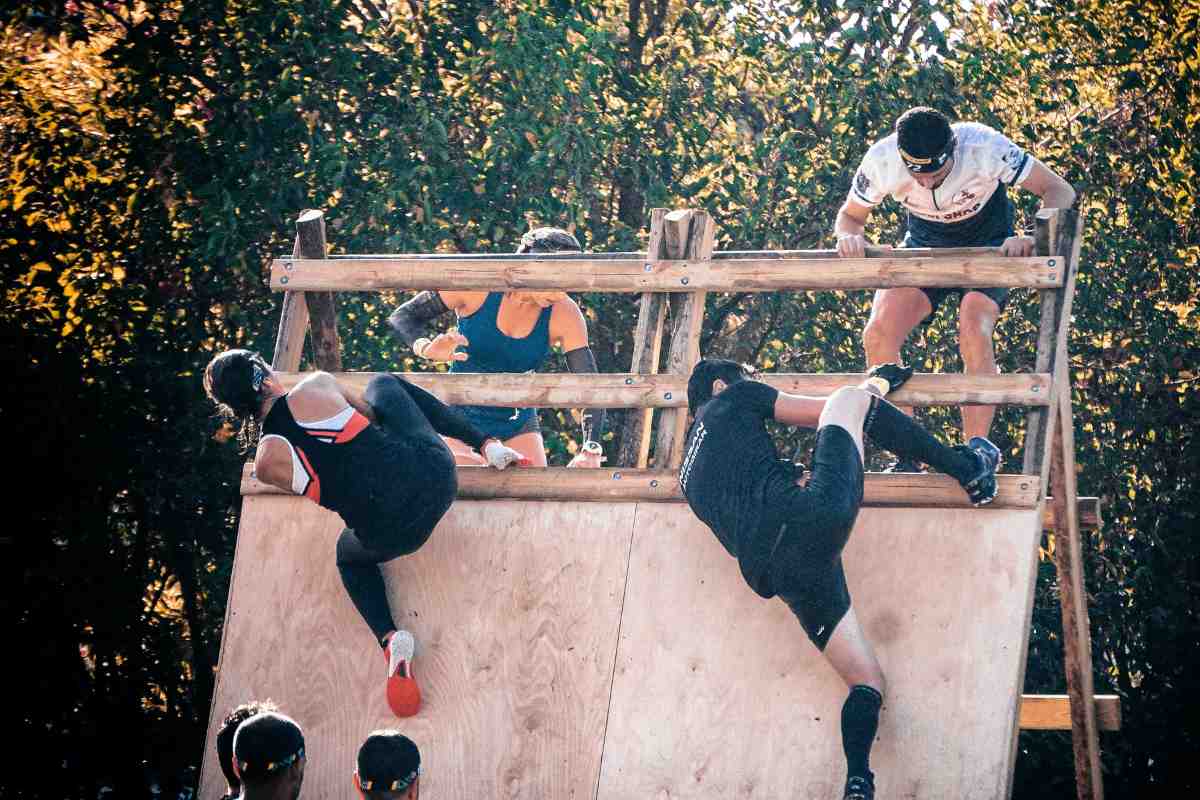
Tough Mudder Vs Spartan Race: Which is Harder?
Obstacle course races like Spartan Race or Tough Mudder combine both fun and challenge but have their unique elements. With that in mind, Spartan Race vs. Tough Mudder, which is harder? It’s widely accepted that the Spartan Race is more difficult and there are several reasons why.
Firstly, the Spartan Race puts the spotlight on being strong and fit, as well as prepared. You’ll deal with obstacles like carrying heavy objects, climbing, and navigating tough terrain on your own. In Tough Mudder, most challenges can be overcome with creativity and teamwork. For example, a typical climbing obstacle on Tough Mudder, such as the Pyramid Scheme, challenges your understanding of physics and forces you to cooperate. Meanwhile, in Spartan Races, you either can or can’t climb that rope or wall, not much else to it.
Second, Spartan Races have more rigorous rules, as we’ve mentioned before. In Spartan Races, you must attempt each challenge exactly in the row they’re set out in. You only have one attempt at most challenges, and there are penalties for failing. Meanwhile, Tough Mudder allows you to skip challenges if you’re not up for them, with the only cost not being eligible for leaderboards and rewards.
Finally, the competitive atmosphere of Spartan Races can be more strenuous depending on your personality. People rushing to the finish line can be overwhelming in some cases, and there’s less emphasis on interacting with others, which can feel isolating.
To summarize, here’s a quick table rundown of the Spartan Race vs. Tough Mudder:
| Category | Spartan Race | Tough Mudder |
|---|---|---|
| Difficulty | Harder | Easier |
| Approach | Individual | Cooperative |
| Atmosphere | Competitive | Casual |
| Obstacle types | Straightforward, regardless of difficulty | More complex but less physical |
| Emphasis | Individual strength and ability | Teamwork, creativity, awareness |
| Recommended fitness level | Moderate to advanced | Varied but beginner-friendly |
| Rules & Enforcement | Rigorously upheld | Relaxed |
| Disqualification | Possible | Not possible |
| Skip option | No, you have to attempt each obstacle | Skip if you want |
| Penalties for failing | 30 Burpees | None |
Is Preparation Necessary For Such Events?
Many people around the world train specifically for races like Spartan Race, Tough Mudder, and similar events. These obstacle courses offer a series of challenges that test your strength, endurance, reflexes, agility, balance, and so much more.
While Tough Mudder is fairly beginner-friendly, it’s still recommended to be in at least moderate physical shape. Also, it should go without saying that you shouldn’t attempt obstacle course races like Tough Mudder or Spartan Race when not in good health.
If you want to prepare for obstacle course races, barring running the courses over and over, you should be physically active. Athletes who successfully compete and win in these challenges most often do some form of cross-training. For instance, HIIT (High Intensity Interval Training) athletes, tend to have great results at these events. This is because HIIT not only mimics the conditions of the races well (doing short bursts of intense physical activity) but also provides some of the best well-rounded physical exercises relative to time and effort.
Apart from physical conditioning, choosing the right gear is an important part of preparing for outdoor obstacle course runs. Regular gym shorts and T-shirts aren’t going to cut it. The races are done outdoors, meaning you’ll be fully exposed to the elements. If you’ve ever been trekking or hiking, you’ll know that temperature shifts can happen suddenly simply if clouds block out the sun for a few minutes. Not to mention things like rain and winds. Thus, wearing compression clothing is highly recommended, as compression will stimulate blood flow and keep you warm and energized.
The type of shoes you wear is also an important difference maker. Regular running shoes will not survive the obstacle course. The terrain is rocky, the infamous Spartan Race mud pits are found throughout the track, multiple obstacles are done in water, etc. It’s highly recommended you wear outdoor sports shoes such as trail runners.
FAQ
Does Spartan Own Tough Mudder?
Yes, as of 2020, the Tough Mudder brand is owned by the Spartan Race company.
What Are The Negatives Of The Tough Mudder?
Aside from the obvious risk of injury, some people might not like Tough Mudder because of the mental challenges. For example, in Arctic Enema, you have to walk through and occasionally dive in cold water. In Electroshock Therapy, you can’t avoid getting zapped, you must endure it. Meanwhile, the Cage Crawler’s limited breathing and space can be anxiety-inducing and trigger fears like Claustrophobia.
There are multiple obstacles where you simply must get wet and dirty. There’s an option to skip obstacles, but that defeats the purpose of the race for some people. Many find this fun and exciting, but Tougher Mudder and Spartan Race mud and water pits are dangerous if you accidentally ingest their contents.
What Does Training Look Like For Spartan Racing and Tough Mudder?
Both races require a mix of general athleticism such as strength, speed, mobility, endurance, mind-muscle synergy, but also mental resilience. Cross-training methods such as HIIT are a popular way to get in shape for these events, barring training on similar obstacle courses.
Can Normal People Do Tough Mudder?
Yes, Tough Mudder is challenging but it’s generally designed for a wide audience. If you’re in relatively good physical shape, you will complete the course. What’s more, Tough Mudder allows participants to skip obstacles and there are no penalties for doing so.
Conclusion
This concludes our breakdown of Tough Mudder vs. Spartan Race obstacle courses. Both offer a fun and dynamic challenge and put your body and mind to the test. If you’re going to take any of these on, it’s essentially to come prepared.
All things considered, races like Tough Mudder and more beginner-friendly and less physically challenging. The atmosphere at the events is more casual and social and there isn’t a huge pressure on completing the course. Meanwhile, races like Spartan Race are more fierce and competitive. They’re better for more advanced athletes who want to put their bodies to the test.
We’d love to hear from you as well. Have you tried either of these or another obstacle course before? Which of these two sounds better and why? Leave a comment letting us know and remember to follow us on social media for more valuable fitness content.
References:
- “2024 SPARTAN WORLD CHAMPIONSHIPS” – Spartan Race https://race.spartan.com/en/race/championships (accessed Jan. 5, 2024)
- David G. Pearson, Tony Craig, “The great outdoors? Exploring the mental health benefits of natural environments” – Frontiers in Psychology vol. 5 (2014), 1178
- Mark Stevens, Jacqueline Lieschke, Tegan Cruwys, Diana Cárdenas, Michael J. Platow, Katherine J. Reynolds, “Better together: How group-based physical activity protects against depression” – Social Science & Medicine vol. 286 (2021), 114337
- Muhammed Mustafa Atakan, Yanchun Li, Şükran Nazan Koşar, Hüseyin Hüsrev Turnagöl, Xu Yan, “Evidence-Based Effects of High-Intensity Interval Training on Exercise Capacity and Health: A Review with Historical Perspective” – International Journal of Environmental Research and Public Health vol. 18, no. 13 (2021), 7201
- Joseph J. Knapik, “Obstacle Course Events: Hazards and Prevention Measures” – Journal of Special Operations Medicine vol 22, no. 2 (2022), 129-138
- “Obstacle Rules” – Spartan Race https://s3-eu-central-1.amazonaws.com/v7-eu-uploads-sp/wp-content/uploads/sites/6/2018/01/17075924/obstacle_rules_jan_2018_eng.pdf (accessed Jan. 5, 2024)
- Shane F. O’Riordan, Rod McGregor, Shona L. Halson, David J. Bishop, James R. Broatch, “Sports Compression Garments Improve Resting Markers of Venous Return and Muscle Blood Flow in Male Basketball Players,” Journal of Sport and Health Science 12, no. 4 (2023): 513-522.
- “Spartan Race” – Wikipedia https://en.wikipedia.org/wiki/Spartan_Race#:~:text=Spartan%20Race%20acquired,London.%5B13%5D (accessed Jan. 5, 2024)
If you have any questions or suggestions, you can contact us via email – [email protected]



